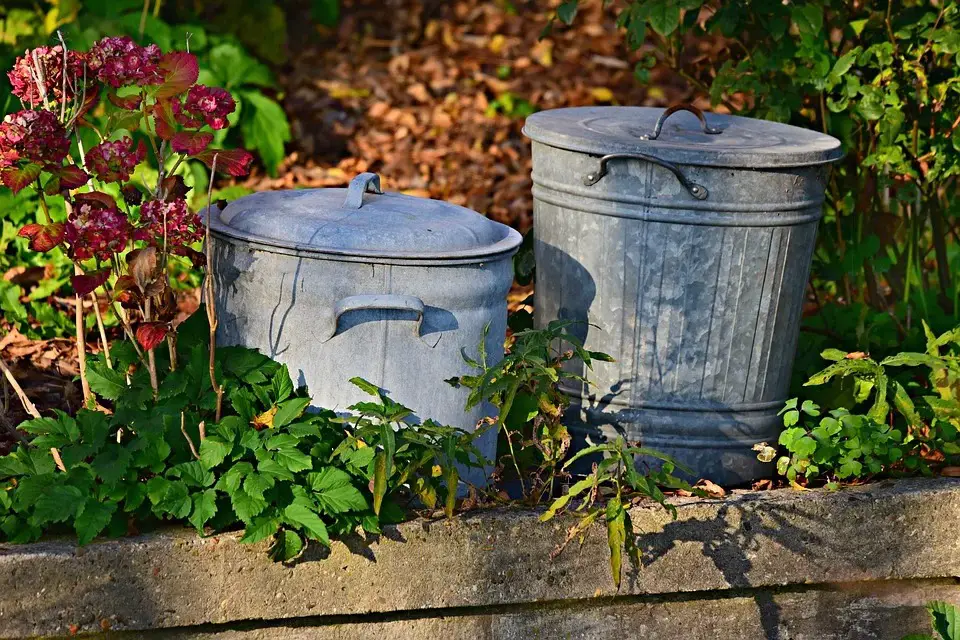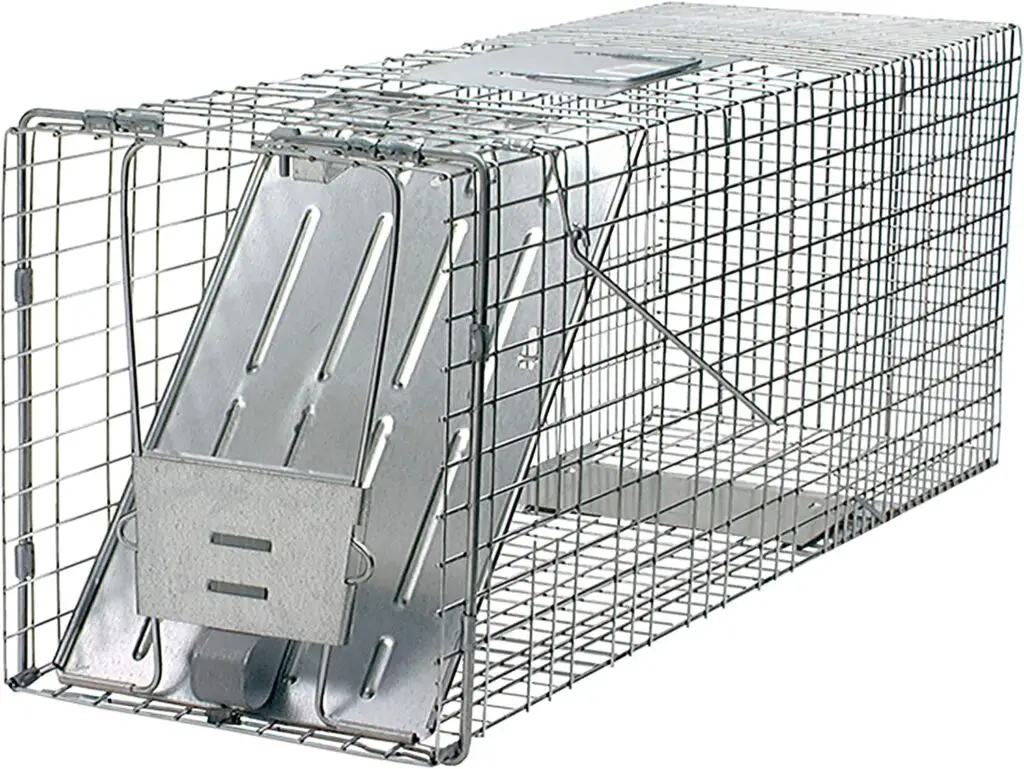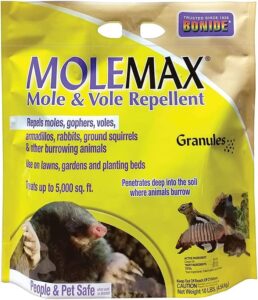Armadillos have a reputation for invading people’s properties, especially in the southwest areas of America. Although they have a spiked appearance and a smaller stature, you can’t deny that they are lawn destroyers.
Their infestation wreaks havoc on your lawn’s vegetation, making things inhabitable as well. One fun fact about Armadillos is that they are the only mammal with a hard shell. When it comes to the extent of damage, these tiny creatures can create burrows in the soil, and damage crops, grass, and vegetation.
If you are wondering how to get rid of Armadillos, you have come to the right place because we will discuss more of that in this article.
Also read: How to Get Rid of Mice? 8 Tried & Tested Methods
Table of Contents
What Indicates a Potential Armadillo Infestation?
Armadillos are often a foreign subject for many. Given that they aren’t easily found around, it isn’t surprising that knowing they are the ones causing an issue in your garden or backyard is often unknown.
Some of the common signs that you are struggling with armadillo infestation include:
- Damage to the pipes and wires around the house
- Plants that are uprooted off the ground
- Cracks in sidewalks and driveways too
- Presence of shallow holes throughout the lawn
- Presence of burrows around the home
If you want to witness their presence in real-time, we’d recommend that you check around your home’s perimeter, stumps, and the rock piles around your garden or backyard.
Since armadillos are burrowers, you also need to look for signs of mounds of dug-up soil next to the burrows they have created. Regarding their presence, armadillos are commonly found in a few of the southern states across the United States, including Florida and Texas.
Why are Armadillos Infesting your Home?
Now that you have seen signs of armadillos infesting your house, your next thought will be, “Why are they infesting my home?”
The answer to that is pretty simple. Your home backyard or lawn serves as a spot for the armadillos to hide. Since they prefer damp spots around the house, that’s another reason they are most likely infesting your home.
Also, if you live somewhere close to the woods and have moist and porous soil around your house, that’s another reason armadillos are getting attracted to your home.
Steps to Eliminate Armadillos from around your Property
Besides hideout spots and humidity, another reason armadillos infest your property is potentially due to food sources.
Now, before you get confused, let us stop and rewind a bit. Armadillos, for the most part, are safe to handle. They aren’t very wild and will only attack you if you badly provoke them.
With that out of the way, the next thing you need to focus on is some of the effective ways you can eliminate these mammals from your property:
1. Identify the Armadillos
The signs of an armadillo infestation are similar to that of other rodents. The first step to eliminating potential armadillos from your home is to identify them.
Is it even an armadillo infestation? This is something you have to confirm in the first place. Besides confirming that it’s an armadillo, another thing you have to confirm is the type.
The most common type is the nine-banded armadillo. They are generally brown to black, so you have to keep an eye out.
2. Eliminate the Food Source

The next thing to focus on is identifying different food sources. Since animals infest our properties in search of food, armadillos do the same too.
So, if you keep your trash can open, have fallen fruits on the ground, or even have insect infestation around the yard, that’s another reason armadillos frequent your home or yard.
The best way to fix that issue is by eliminating every last trace of the food source from those areas. Besides active food sources, we’d also recommend that you focus on the upkeep of your yard.
3 .Use a Trap

There are several live traps available in the market that people use to catch armadillos. Before you get confused and twisted, this is a humane way of eliminating armadillos from your property. You don’t have to worry about the trap hurting the small, hard-shelled mammal.
Instead, you have to observe their movement for a few days before you place the trap. Once you have a good idea about the mammal’s movement, it becomes easier to place the trap in the right area around your home.
Place the trap with a treat so they get lured inside. Once trapped, you can cover the trap with a piece of cloth and then relocate the armadillo somewhere safe.
4. Look for Signs of Damage
When trying to eliminate armadillos from your property, we’d suggest you assess the extent of the damage. This is the first step on how to get rid of armadillos because it gives you a good idea of how to progress next.
Assessing the damage around your property helps you figure out what you are dealing it. If there are one or multiple armadillos around, you have to work with them. Since they are nocturnal, spotting them can be challenging.
Don’t worry, though, because the biggest sign of their infestation is the kind of damage they inflict on the property. If the grass, turf, etc., is upturned, that’s a clear sign of armadillo infestation in your home.
5. Clean the Yard or Garden

Another easy fix to eliminate or prevent future armadillo infestation at your property is to get rid of hiding spots.
Before you get further confused, let us explain. Armadillos require extra coverage when burrowing holes into the soil in your backyard. If your yard is filled with shrubs, bushes, debris from fallen leaves, etc., that’s a sign that you need to clear things away.
If you have larger bushes and shrubs around the yard, those have to go. The fewer the hiding spots, the more difficult it becomes for the mammal to scope around the property and build a temporary home for itself.
6. Install a Fence

More than a way to “eliminate”, this one is a way to “prevent” armadillo infestation in your home. Armadillos aren’t the biggest mammals and aren’t as athletic as you think. So, the easiest way to keep them off your property is by installing a fence around your house.
However, there is a catch. Although they can’t jump and cross the fence, it doesn’t stop them from burrowing deep inside the ground and making their way into your property.
So, when installing a fence, you have to ensure that you dig it deep into the soil so they don’t burrow its way into the property.
7. Use Natural Repellents

Next on the list of things you can do to eliminate an armadillo from your property is to use natural repellents. There are quite a few different ones available that are effective in keeping these small creatures out of your home’s premises.
Aromatics and spices work the best in this case. So, items like cayenne and garlic can work wonders in keeping these mammals off the property.
The sharpness and spiciness of the cayenne act as a deterrent, while the pungent smell of the garlic acts as a deterrent. In both cases, they work their wonders, so we’d recommend giving this a go.
8. Use a Commercial Repellent

There are electronic deterrents that are effective in scaring the armadillo out of your property. However, we’d recommend not using those because they aren’t humane and can end up hurting the animal in the process.
What you can use instead is a commercial repellent. These repellents primarily consist of castor oil that’s effective in destroying the food source and the home of the armadillo, making them find shelter elsewhere.
Sometimes, people use commercial and electronic repellents to eliminate the animal from the property.
9. Contact a Professional
The last and potentially most effective way to sort things out is by contacting a professional. You should have a local pest company that can help you locate these mammals and find effective yet humane ways to eliminate them from your property.
Since we are talking about professionals, they also come equipped with all the rational equipment and tools you’d need for the process.
That’s all you need to know about armadillos. We have shared some of the tried and tested ways to get rid of armadillos that we know for a fact works like magic. If one technique doesn’t work, our advice would be to try something else. If nothing helps, you should always resort to professional help to sort things out.
Also read: How to Fill Chipmunk Holes? | Easy Ways to Identify & Fix
Frequently Asked Questions (FAQs)
How do you keep armadillos away?
The best tip to keep armadillos away is to use a commercial repellent composed of castor oil. They are effective and potent enough to penetrate the soil and damage the animal’s food source.
What is the best thing to get rid of armadillos?
The most effective and humane way to eliminate armadillos off the property is by using a trap.
What pesticide kills armadillos?
One of the effective pesticides that indirectly kill armadillos is Bifen LP Granules. However, we’d recommend looking into other effective methods.
What smells will keep armadillos away?
Strong smells like garlic, vinegar, mothballs, etc., act as good deterrents to keep the armadillos away.
Will garlic get rid of armadillos?
The pungent odor of the garlic is a great and effective deterrent to keep the armadillos out of the property for good.
Are armadillos aggressive?
Armadillos aren’t aggressive or harmful unless you provoke them unnecessarily. However, they do have a risk of transmitting rabies, so handle them with gloves.
Does lime get rid of armadillos?
There is no potential evidence that shows the effectiveness of limes in keeping armadillos out of the property. So, we’d recommend trying something else.
What is a natural remedy for armadillos?
Spraying a mixture of cayenne pepper and water is quite effective in eliminating armadillos from your property.
What essential oils get rid of armadillos?
Armadillos aren’t a massive fan of strong scents, which means that if you want to eliminate them off your property, spraying the perimeter with essential oils is a great thing to do.
Will white vinegar deter armadillos?
The pungent smell of white vinegar is an effective way to eliminate or deter armadillos from your property.
Do armadillos carry diseases?
Yes, Armadillos carry a host of diseases, including rabies and other kinds of bacterial infections. So, when it comes to handling them, it is better to do so with gloves.
